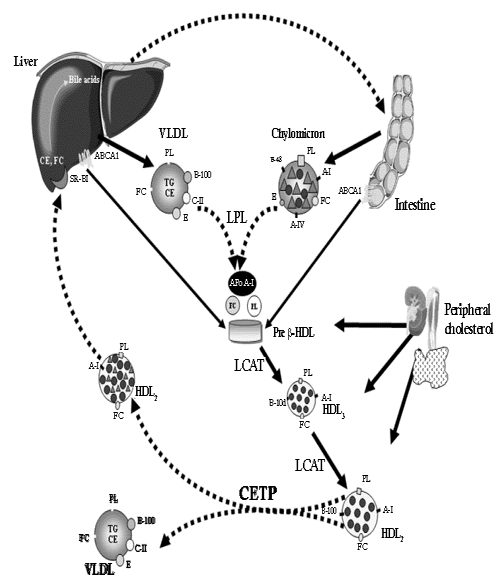
 |
| Figure 2: HDL biogenesis ApoA-I is synthesized in the intestine and liver. A proportion of the ApoA-I interacts with ATP-binding cassette transporter A1 (ABCA1) to acquire phospholipids and unesterified cholesterol, generating discoidal HDLs. Free cholesterol (FC) (removed by HDL) is esterified by lecithin-cholesterol acyltransferase (LCAT) and buried in the HDL hydrophobic core, which favors a more spherical form and the formation of HDL3. The persistent removal of FC and LCAT activity results in HDL2 formation. Lipid-free/lipidpoor ApoA-I can also form discoidal complexes with the phospholipids and cholesterol that dissociate from the surface of triglyceride-rich lipoproteins (chylomicrons and VLDLs) that are undergoing lipolysis by lipoprotein lipase (LPL). This pathway has the potential to make a significant contribution to the total HDL pool. |